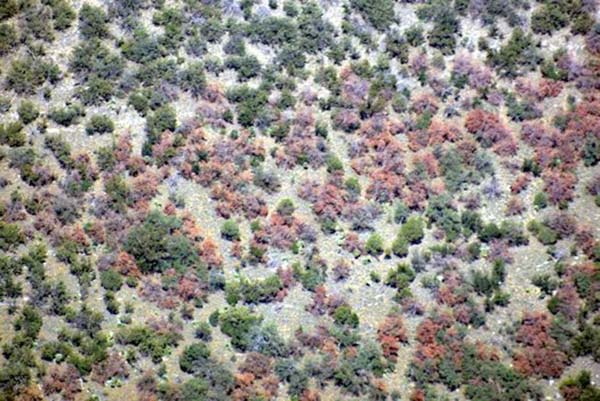FLAGSTAFF, Ariz. — The latest assessment of forests across Arizona showed unexpectedly large areas of dead or dying trees. Aerial surveys conducted by the U.S. Forest Service in mid-2018 found about 1.7 million acres of ponderosa pine, piñon, and juniper trees with yellowing, red or brown needles.
Forest Service officials attribute the problem to increased stress due to extended drought and other effects of climate change. Sandy Bahr, executive director of the Grand Canyon Chapter of the Sierra Club, said another factor is that elected officials refuse to deal with climate change.
“In Arizona, one of the things that we’ve asked the governor, ‘Hey we need a plan. We don’t have a plan,’” Bahr said. “We don’t have a plan for reducing emissions, and we don’t have a plan for dealing with the many issues that we’re seeing.”
During his 2018 reelection campaign, Gov. Doug Ducey said he’s confident the energy marketplace will solve climate change, and that new regulations aren’t needed.
Forest Service scientists say drought weakens trees, which are then killed by infestations of bark beetles and other insects. Most of Arizona has been in a continuous drought since 2009, with no relief in sight.
Bahr said she thinks forest managers should return to a program of proscribed or controlled burns to help preserve the state’s woodlands.
“Fire helps to thin out the smaller trees that help to promote growth of grasses, and you will get a healthier forest overall,” she said. “And so, fire exclusion has had an impact on the forest.”
She said the long-term solution is to significantly reduce carbon in the atmosphere and the effects of climate change.
“There are a variety of things that we can do, but overall, we need to deal with climate change,” Bahr said. “So, whatever we can do to minimize other stresses on the forest needs to happen.”
Federal officials conducted aerial surveys of more than 12 million acres of Arizona’s national forests, as well as state, tribal and private land. The agency plans a ground survey of the affected areas and a more detailed report later this year.









